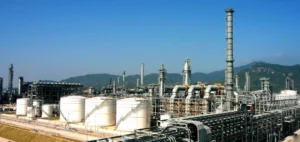Oil prices rose by more than 1% on October 8, driven by an unexpected decision from the Organization of the Petroleum Exporting Countries and its partners, known as OPEC+, to limit their production increase in November. Benchmark Brent crude rose by 82 cents, or 1.3%, to $66.27 per barrel, while U.S. West Texas Intermediate (WTI) climbed 85 cents, or 1.4%, to $62.58.
A modest increase supports prices
OPEC+ agreed to a production increase of only 137,000 barrels per day for November, despite growing signals of a market surplus. This decision is seen as a minimal compromise aimed at maintaining group cohesion amid differing concerns among its members. “The bare minimum that OPEC+ decided to get away with on Sunday still provided some support,” said PVM oil analyst Tamas Varga.
This modest adjustment comes as several analysts warn of a growing imbalance between supply and demand. According to Goldman Sachs, global crude inventories increased by 1.5 million barrels per day in the last quarter, despite historically strong seasonal demand. The bank forecasts a surplus reaching 2 million barrels per day from Q4 2025 through Q4 2026.
U.S. factors and persistent uncertainties
Market participants are also awaiting the weekly data from the Energy Information Administration (EIA), expected on October 8. Sources who reviewed figures from the American Petroleum Institute (API) indicate that U.S. crude stocks rose by 2.78 million barrels during the week ending October 3, while gasoline and distillate inventories fell.
Meanwhile, the EIA announced that U.S. oil production is expected to reach a record level in 2025, surpassing previous forecasts. This trend could intensify tensions between excess supply and global demand, particularly if Russian output reductions were to deepen.
Goldman Sachs notes that any unexpected decline in Russian production could pose an upside risk for prices, despite the surplus context. The market therefore continues to evolve in an uncertain environment, influenced by both OPEC+ policy adjustments and U.S. domestic production dynamics.






















